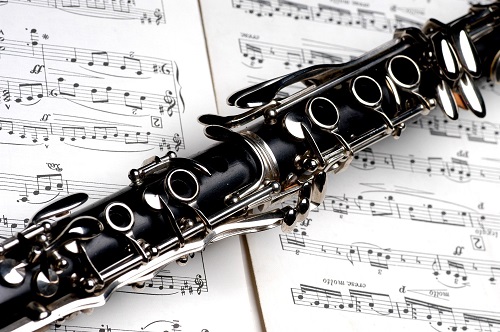Music education may look like one of the easiest online master’s degrees, but in fact, the program requires advanced, graduate-level work in both music and instruction. Master’s degree programs in music education can be licensure or non-licensure programs, but in either case, they focus on teaching principles and practices, including how to create a curriculum for a music class. Graduate students pursuing a master’s degree in music education learn about the principles and practices of age-appropriate curriculum development.
IMAGE SOURCE: Pixabay, public domain
Studying Curriculum Development in a Music Education Master’s Program
The crucial difference between studying music at the master’s level – such as in a program that would culminate in a Master of Fine Arts – and studying music education is the focus on pedagogy. Learning how to teach is part of the core curriculum of a graduate program in music education. This includes curriculum development as well as the principles of teaching and learning, classroom management and methods of grading and evaluation.
Coursework in developing a music education curriculum includes teaching music for different age groups, including young children, elementary school children and high school children. Aspiring music educators learn about the fundamentals of conducting a band or orchestra and about teaching both choral materials (singing) and instrumental materials and techniques. You might also take classes specific to the applied studio teaching model of music education, teaching music to exceptional children and how to use creativity and problem-solving techniques as a music instructor.
One of the best ways to learn how to create lessons for students of music is by actually doing it. If your master’s in music education program leads to licensure as a teacher, there’s a good chance your curriculum will include some form of field experience or student teaching. This hands-on experience allows you to immerse yourself in the classroom environment and practice writing lesson plans and delivering instruction to real classes of students under the supervision of an established teacher.
Student teaching experiences typically last an entire semester, so they allow you to truly get a handle on what it’s like to be a music teacher day in and day out.
What to Cover When Teaching Music at the K-12 Level
As a longtime student of music, you’ve probably devoted a lot of your time to refining your own skills and techniques in performing music. However, your job as a music teacher isn’t necessarily to make perfect performers out of your students. Depending on the grade levels you are responsible for teaching, your curriculum may focus more on learning the principles of music and developing an interest in and appreciation for music.
In early childhood, music education might revolve around unstructured or minimally structured play with small rhythm instruments and basic singing. Later in elementary school, your curriculum might encompass music history, including famous figures, works and movements in music. Elementary school students might also begin learning to play basic instruments, like recorders, and learning to read music. For music teachers of middle school and high school students, your responsibilities are more likely to focus on teaching students to play musical instruments and conducting the student band or choir.
Planning school concerts and other events that showcase students’ musical performance is another task music teachers perform, according to the United States Bureau of Labor Statistics. Music teachers are generally responsible for selecting age-appropriate programming for these concerts and teaching students the music they will play or sing in the concert.
Technology also has a place in modern music classrooms. The educational technology most widely used by music teachers is an interactive whiteboard, which 59 percent of music teachers report utilizing, the National Association for Music Education reported. Further, 48 percent of music teachers say they create lesson plans online, 45 percent report using interactive or web-based games, 35 percent use some sort of tablet and 11 percent use an interactive table.
There are many reasons to bring educational technologies like these into the classroom. According to the National Association for Music Education, 74 percent of music teachers reported that these tools expand the music curriculum and that technology motivates learning. Nearly as many music teachers report that the use of technology allows students to use different learning styles.
New and established music teachers can also seek inspiration from professional music education organizations, such as the National Association for Music Education.
Additional Resources
Do Most Schools Require a Performance to Be Able to Get Into the Music Education Program?
Are There Many Jobs Outside of Academia for Someone With a Music Education Degree?
Does Getting a Master’s Degree in Music Education Allow Me to Teach in Most Schools?

